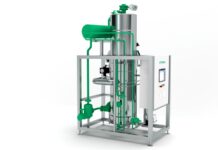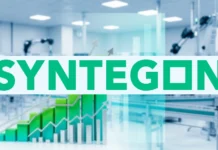Exploring Novel Excipients for Next Generation Drug Formulation
The landscape of pharmaceutical development finds itself at a critical juncture where the complexity of drug molecules increasingly outpaces the capabilities of traditional formulation approaches. Novel excipients drug formulation represents not merely an incremental advancement but a paradigm shift addressing fundamental limitations that have constrained drug development for decades. As active pharmaceutical ingredients become more sophisticated, featuring poor solubility, limited bioavailability, and structural instability, the pharmaceutical industry recognizes that innovation in excipient technology must keep pace with advances in drug discovery.
The Evolution of Pharmaceutical Excipients
Historically, excipients were viewed as inert substances added to formulations solely to facilitate manufacturing or improve physical properties of dosage forms. This perception has undergone profound transformation as scientific understanding revealed that excipients actively influence drug stability, dissolution, absorption, and therapeutic performance. Modern excipients fulfill multiple functional roles simultaneously, serving as solubilizers, stabilizers, permeation enhancers, and release modifiers while maintaining compatibility with active pharmaceutical ingredients and manufacturing processes.
The designation of novel excipients encompasses a spectrum of materials. True new chemical entities represent genuinely innovative molecules designed specifically to address contemporary formulation challenges. Modified excipients build upon existing materials through alterations in purity, particle size, or other physical properties that enhance functionality. Co-processed excipients combine two or more existing excipients through manufacturing processes such as spray drying to create materials with performance characteristics unattainable through simple physical mixing. Each category addresses different aspects of the formulation scientist’s toolkit, expanding possibilities for developing effective drug products.
The innovation paradox facing novel excipients stems from regulatory uncertainty surrounding their approval. Unlike active pharmaceutical ingredients, which follow well-defined regulatory pathways, excipients lack an independent approval process. Novel excipients must be evaluated as components of complete drug product applications, creating hesitancy among formulators concerned about additional regulatory scrutiny and potential application delays. This catch-22 situation, where manufacturers are reluctant to develop novel excipients due to limited adoption and formulators are hesitant to use them due to lack of regulatory precedent, has slowed innovation despite clear clinical needs.
Regulatory Landscape and Recent Developments
Recognition of the innovation-stifling effects of regulatory ambiguity has prompted agencies to establish frameworks supporting novel excipient development. The United States Food and Drug Administration launched the Novel Excipient Review Pilot Program in 2021, selecting four novel excipients for review over a two-year period using a new pathway. This program allows manufacturers to obtain agency review prior to incorporation of novel excipients in drug formulations, providing valuable feedback on safety characterization, quality specifications, and appropriate uses.
The subsequent Pilot Program for the Review of Innovation and Modernization of Excipients, initiated in 2023, continues this trajectory by establishing a voluntary mechanism for biopharmaceutical manufacturers to obtain review of novel excipients. While these programs do not constitute independent excipient approval processes, they represent significant steps toward reducing uncertainty and supporting innovation. The agency’s acknowledgment that lack of novel excipients constitutes a genuine problem signals evolving perspectives that may accelerate development of enabling technologies.
International harmonization of excipient regulations remains an ongoing challenge. Different regulatory authorities maintain varying requirements for excipient characterization, safety data, and quality standards, complicating global development and commercialization. Industry organizations and pharmacopeial bodies work toward establishing consistent standards and monographs that facilitate international acceptance of novel excipients, though significant work remains to achieve true harmonization.
Categories of Novel Excipients and Their Applications
Solubility-enhancing excipients address one of the most pressing challenges in modern pharmaceutical development, as the majority of drug candidates in development pipelines exhibit poor aqueous solubility. Novel polymeric excipients such as soluplus, polyvinyl caprolactam-polyvinyl acetate-polyethylene glycol graft copolymer, enable formation of amorphous solid dispersions that dramatically increase dissolution rates and bioavailability of poorly soluble compounds. These polymers combine solubilization capacity with stabilization of amorphous forms, preventing recrystallization that would negate solubility advantages.
Captisol, a sulfobutyl ether derivative of beta-cyclodextrin, exemplifies novel excipients designed for specific applications. This chemically modified cyclodextrin demonstrates enhanced solubilization capacity compared to natural cyclodextrins, enabling parenteral formulation of otherwise intractable compounds. The sulfobutyl ether substitution confers improved water solubility on the cyclodextrin itself while increasing the stability of drug-cyclodextrin inclusion complexes. High aqueous solubility allows formulation of high drug concentrations suitable for intravenous administration of drugs that would otherwise require organic cosolvents associated with adverse effects.
Mucoadhesive polymers represent another category of novel excipients drug formulation employs to enhance oral bioavailability. Carbopol polymers, cross-linked polyacrylic acid derivatives, demonstrate excellent mucoadhesive properties that prolong residence time in the gastrointestinal tract and enhance drug absorption. Recent developments have focused on optimizing molecular weight, cross-link density, and functional group content to enhance mucoadhesion while maintaining acceptable rheological properties for manufacturing.
Permeation enhancers constitute a class of excipients that transiently increase epithelial permeability, facilitating absorption of poorly permeable drugs. Bile acids, natural molecules evolved to optimize lipid digestion and absorption, possess dual hydrophilic-lipophilic character that enables interaction with both drug molecules and biological membranes. Their unique properties make bile acids promising functional excipients for enhancing permeation across biological barriers while offering advantages over synthetic permeation enhancers in terms of biocompatibility and physiological relevance.
Multifunctional and High-Functionality Excipients
The concept of multifunctional excipients has gained prominence as formulation scientists seek to simplify formulations and manufacturing processes while maintaining or enhancing product performance. These materials fulfill multiple roles within a single dosage form, such as serving simultaneously as filler, binder, and disintegrant. Co-processed excipients frequently fall into this category, as the manufacturing process creates synergistic properties not present in individual components.
High-functionality excipients go beyond multiple basic functions to provide sophisticated capabilities that enable innovative drug delivery systems. These materials may offer improved flow characteristics, enhanced compressibility for direct compression tableting, or superior compatibility with moisture-sensitive drugs. The economic benefits of high-functionality excipients include reduced formulation complexity, streamlined manufacturing processes, and potentially lower production costs despite higher excipient prices.
Recent advances in co-processing technology have yielded excipients combining complementary properties in optimized ratios. Spray-dried combinations of microcrystalline cellulose with other functional excipients create materials suitable for direct compression while providing modified release characteristics or improved drug loading capacity. These engineered excipients address multiple formulation challenges simultaneously, accelerating development timelines and reducing the number of excipients required in final formulations.
Novel Excipients for Specialized Applications
Biologics formulation presents unique challenges that conventional excipients inadequately address. Proteins and peptides exhibit structural instability, aggregation propensity, and immunogenicity concerns requiring specialized stabilizers. Novel amino acid-based excipients and sugar derivatives provide superior protein stabilization compared to traditional excipients, maintaining native conformations and preventing aggregation during manufacturing, storage, and administration. The selection of appropriate excipients for biologics must consider not only stability but also potential impacts on immunogenicity, as certain excipients may either mask or expose immunogenic epitopes.
Controlled-release applications benefit from novel polymeric excipients designed to provide precise control over drug release kinetics. Kollicoat smartseal represents one example, offering enteric coating properties with improved acid resistance and rapid dissolution at intestinal pH. These functional polymers enable targeted delivery to specific gastrointestinal regions, protecting acid-labile drugs while ensuring efficient release at absorption sites. The ability to tailor release profiles through excipient selection and coating parameters provides formulation scientists with powerful tools for optimizing pharmacokinetic profiles.
Taste-masking represents another application where novel excipients drug formulation proves valuable, particularly for pediatric and geriatric populations. Ion exchange resins and taste-masking polymers that complex with bitter drugs prevent interaction with taste receptors while maintaining drug release characteristics suitable for absorption. Recent innovations focus on developing excipients that provide taste-masking without compromising bioavailability, a challenging balance that requires sophisticated understanding of drug-excipient interactions.
Compatibility and Stability Considerations
Drug-excipient compatibility studies constitute critical components of preformulation work, as interactions between active pharmaceutical ingredients and excipients can compromise stability, bioavailability, or therapeutic efficacy. Chemical reactions including oxidation, reduction, hydrolysis, and Maillard reactions may occur between drugs and excipient components or impurities. Physical incompatibilities such as phase separation, eutectic formation, or polymorphic conversion can alter drug dissolution and absorption characteristics.
Novel approaches to compatibility assessment have emerged to accelerate screening of excipient candidates. The vial-in-vial methodology represents an innovative approach that exposes drug-excipient mixtures to controlled humidity and temperature conditions while minimizing direct water addition. This technique demonstrates superior discriminating ability compared to conventional stress testing, identifying incompatibilities that might be missed by traditional methods. Early detection of compatibility issues prevents late-stage surprises during stability studies that could derail development programs.
The complexity of stability assessment increases for novel excipients lacking extensive historical use data. Thorough characterization of excipient impurity profiles, moisture content, and potential reactive functional groups guides prediction of compatibility issues. Advanced analytical techniques including differential scanning calorimetry, isothermal microcalorimetry, and solid-state nuclear magnetic resonance provide mechanistic insights into drug-excipient interactions, enabling rational selection of compatible materials.
Manufacturing and Processing Implications
Novel excipients drug formulation must demonstrate not only functional advantages but also compatibility with pharmaceutical manufacturing processes. Direct compression represents an increasingly preferred manufacturing approach due to simplicity, cost-effectiveness, and elimination of wet granulation steps that may compromise drug stability. Novel excipients designed for direct compression combine excellent flow properties with high compressibility, enabling formation of robust tablets without requiring granulation.
The emergence of continuous manufacturing in pharmaceutical production places additional demands on excipient properties. Materials must demonstrate consistent flow behavior, blend uniformity, and compaction characteristics across extended production runs. Novel excipients specifically engineered for continuous processes address these requirements, featuring optimized particle size distributions, reduced electrostatic properties, and excellent batch-to-batch consistency.
Additive manufacturing and three-dimensional printing technologies represent emerging paradigms that will require novel excipients with properties suited to these unconventional processes. Printable excipients must exhibit appropriate rheological behavior for extrusion-based printing or powder characteristics suitable for powder bed fusion. The ability to create personalized dosage forms with complex geometries and tailored release profiles depends on availability of excipients optimized for these manufacturing approaches.
Quality by Design and Excipient Selection
Quality by design principles have transformed pharmaceutical development by emphasizing systematic understanding of how material attributes and process parameters affect product quality. Application of quality by design to excipient selection involves identification of critical quality attributes, establishment of design spaces defining acceptable parameter ranges, and implementation of control strategies ensuring consistent product performance.
For novel excipients, quality by design necessitates thorough characterization of physicochemical properties and their impact on drug product performance. Particle size distribution, moisture content, residual solvents, functional group density, molecular weight distribution, and impurity profiles all represent potential critical quality attributes requiring specification and control. Design of experiments methodologies efficiently explore relationships between excipient attributes and formulation performance, identifying optimal ranges and acceptable variability.
Risk assessment constitutes an integral component of quality by design, particularly for novel excipients lacking extensive usage history. Failure mode and effects analysis systematically evaluates potential failure modes, their causes, and impacts on product quality. This structured approach to risk identification guides development of mitigation strategies and control systems, providing confidence that novel excipients will perform as intended across commercial manufacturing scale and throughout product shelf life.
Patient-Centric Formulation Development
The pharmaceutical industry has increasingly embraced patient-centric approaches to drug development, considering patient preferences, adherence challenges, and quality of life impacts when designing formulations. Novel excipients drug formulation contributes to this patient focus by enabling development of more convenient, tolerable, and effective dosage forms.
Palatability-enhancing excipients improve acceptability of oral formulations, particularly for pediatric patients who may refuse bitter or unpleasant medications. Taste-masking polymers, sweeteners, and flavoring agents work synergistically to create formulations that patients willingly consume, improving adherence to therapeutic regimens. The development of excipients that mask taste without compromising bioavailability or stability represents a significant advancement in patient-centered formulation.
Ease of administration considerations drive development of excipients enabling simplified dosing regimens. Once-daily formulations facilitated by controlled-release excipients reduce dosing frequency and improve convenience compared to multiple daily doses. Orally disintegrating tablet excipients eliminate need for water, benefiting patients with swallowing difficulties or those lacking ready access to beverages. These patient-focused innovations translate to improved adherence and better therapeutic outcomes.
Sustainability and Green Chemistry Considerations
Environmental sustainability has emerged as an important consideration in pharmaceutical development, extending to excipient selection and manufacturing. Green chemistry principles favor renewable resources, reduced environmental impact, and elimination of hazardous materials. Novel excipients derived from sustainable sources such as plant polysaccharides offer environmental advantages over petroleum-derived synthetic polymers while maintaining excellent functional properties.
Manufacturing processes for novel excipients increasingly incorporate environmentally conscious approaches. Aqueous-based processes replace organic solvent systems where feasible, reducing environmental impact and workplace exposure risks. Energy-efficient manufacturing and waste minimization strategies align with broader pharmaceutical industry sustainability goals, making novel excipients attractive not only for functional properties but also for environmental credentials.
Life cycle assessment provides comprehensive evaluation of environmental impacts from raw material sourcing through manufacturing, use, and disposal. This holistic view guides selection of excipients with minimal ecological footprints, considering factors including resource depletion, energy consumption, greenhouse gas emissions, and end-of-life biodegradability. As sustainability becomes increasingly important to healthcare systems and patients, excipients with favorable environmental profiles will gain competitive advantages.
Future Directions and Emerging Technologies
The future of novel excipients drug formulation promises continued innovation driven by evolving therapeutic needs and advancing technologies. Stimuli-responsive excipients that release drugs in response to specific biological signals represent an exciting frontier. These intelligent materials may respond to pH changes, enzyme activity, temperature variations, or disease biomarkers, enabling targeted therapy with reduced systemic exposure and side effects.
Nanoscale excipients including dendrimers, carbon nanotubes, and inorganic nanoparticles offer unique properties that may address formulation challenges intractable to conventional materials. While regulatory and safety considerations require careful evaluation, the potential benefits of nanostructured excipients in enhancing solubility, enabling cellular delivery, and providing controlled release warrant continued investigation.
Personalized medicine approaches will likely drive demand for excipients compatible with point-of-care or on-demand manufacturing of customized formulations. Excipients suitable for incorporation into three-dimensional printed dosage forms or compatible with other flexible manufacturing approaches will enable tailoring of drug products to individual patient characteristics, genetic profiles, or disease states.
Conclusion
Novel excipients drug formulation stands at the forefront of enabling technologies that translate increasingly complex drug candidates into viable therapeutic products. As the pharmaceutical industry confronts solubility challenges, stability issues, and delivery obstacles associated with next-generation active pharmaceutical ingredients, innovation in excipient technology becomes not optional but essential. The evolving regulatory landscape supporting novel excipient development, combined with growing recognition of their clinical value, positions these materials as cornerstones of modern pharmaceutical formulation. Continued research, regulatory harmonization, and industry collaboration will expand the novel excipient toolkit, empowering formulation scientists to overcome barriers that have historically limited drug development and ultimately improving therapeutic options available to patients.




















